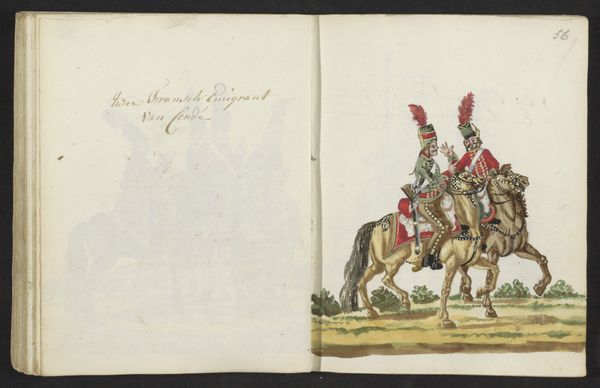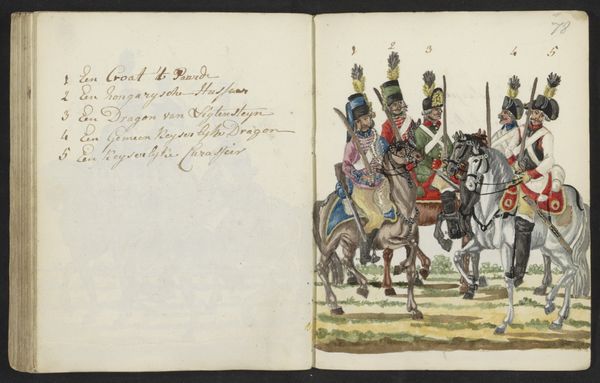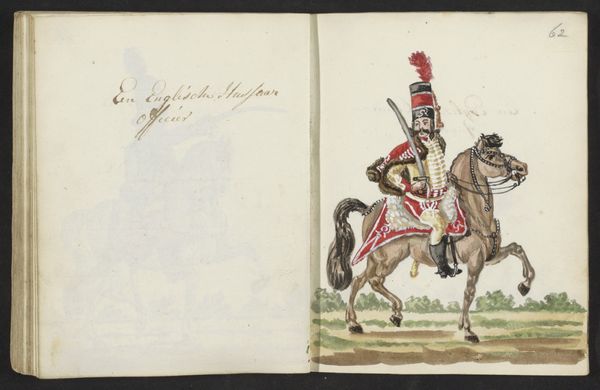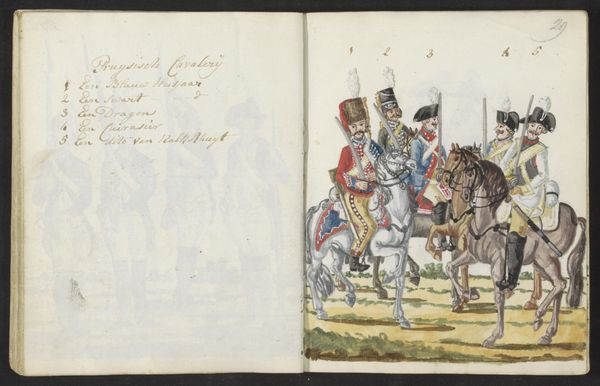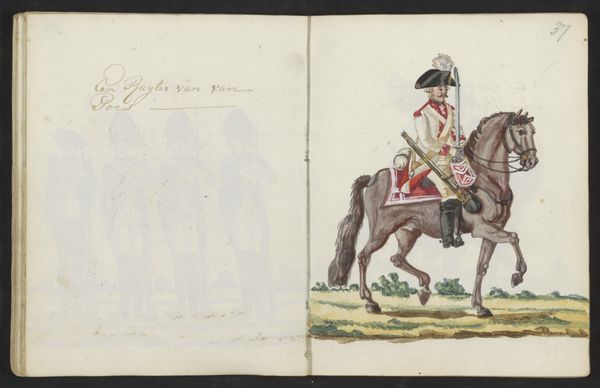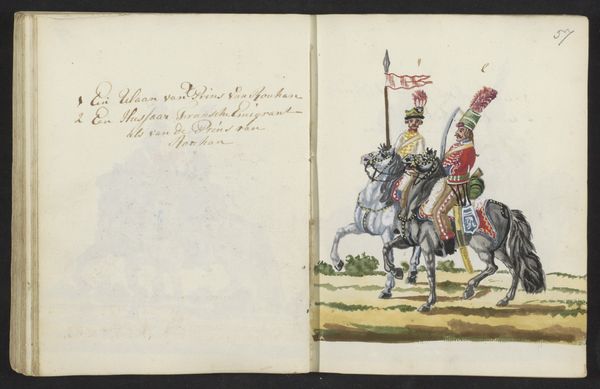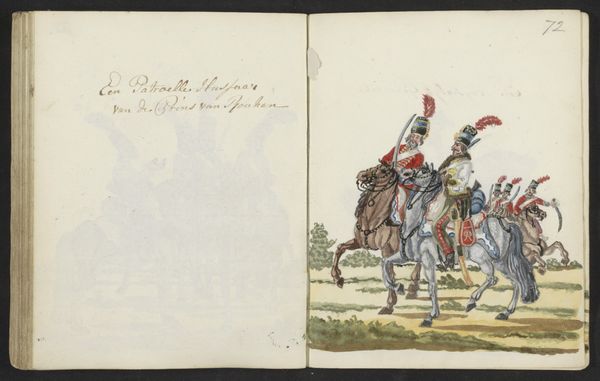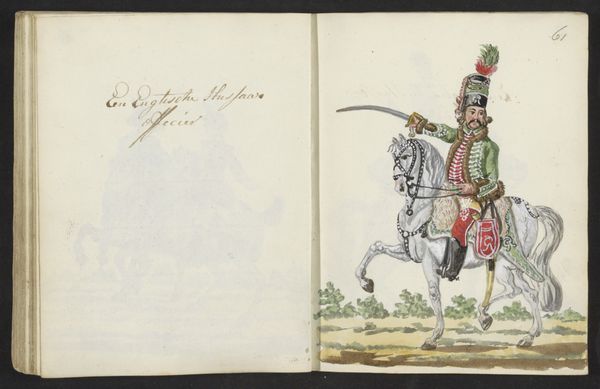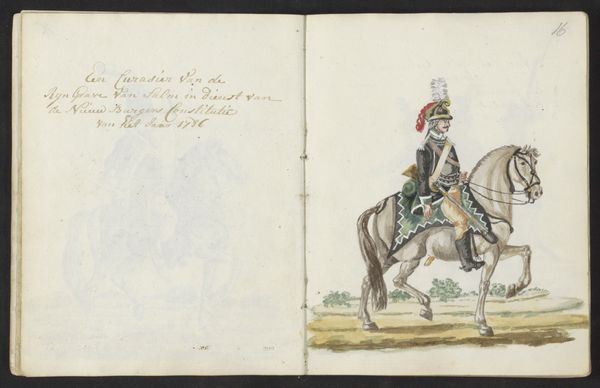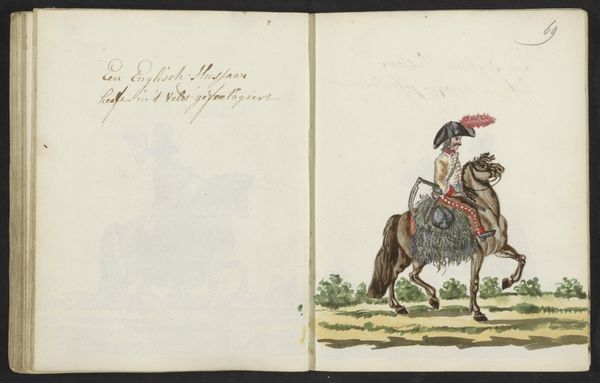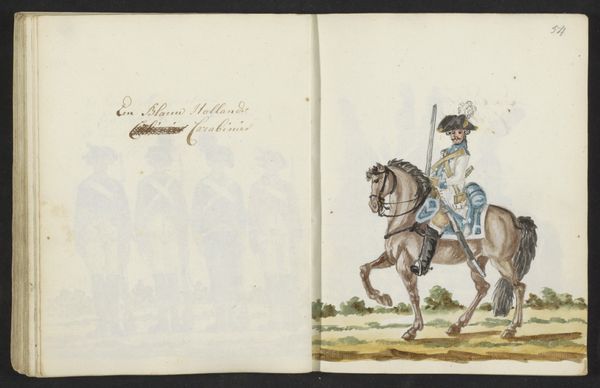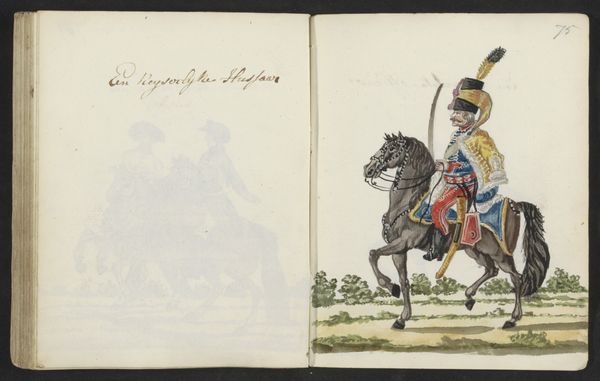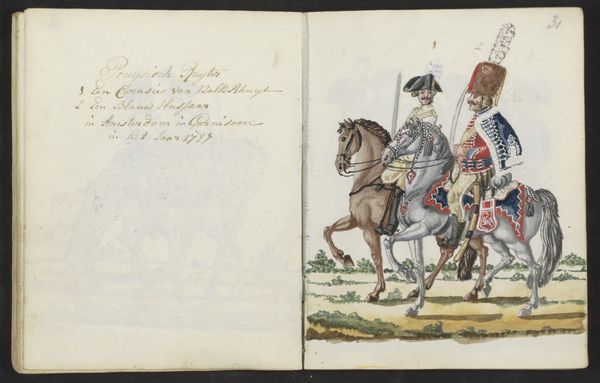
drawing, coloured-pencil, watercolor
#
portrait
#
drawing
#
coloured-pencil
#
watercolor
#
coloured pencil
#
romanticism
#
watercolour illustration
#
genre-painting
Dimensions: height 197 mm, width 310 mm
Copyright: Rijks Museum: Open Domain
Editor: This watercolor and colored pencil drawing, "Uniformen van Engelse cavalerie" by S.G. Casten, dates from 1795 to 1796. I am struck by how detailed and vibrant the colors are for such an old work on paper. What specifically catches your eye about the composition? Curator: The use of line, first and foremost, demands our attention. Notice how Casten utilizes line to define the contours of the figures and their mounts, creating a distinct separation between them and the implied landscape. Consider how these precise lines delineate the individual details of the uniforms, effectively communicating status and regimental affiliation. What semiotic significance might you ascribe to the empty, opposing page? Editor: That's interesting... I hadn't thought about it much, but maybe it is like the negative space highlights the precision and detail of the cavalry on the right. Also the page on the left has the drawing's title. The placement suggests the title informs our reading of the composition, rather than existing separately from it. Curator: Precisely. Furthermore, examine the artist's deployment of color. Note how the chromatic range, although relatively subdued, serves to accentuate key visual elements, primarily the red plumes, sashes and trimmings, drawing our gaze upward and creating a vertical rhythm across the composition. It is a clever compositional strategy of color as a vector of our vision through the picture plane. How does Casten employ shading? Editor: Now that you mention it, the shading seems pretty minimal, especially in the faces of the figures. It almost feels flattened, less realistic. Curator: Indeed. The relative absence of chiaroscuro contributes to a deliberate emphasis on surface detail over three-dimensional form, thereby reinforcing the artwork's function as a study of military dress, or a 'genre painting'. Editor: Thank you. It is useful to learn that sometimes what *isn't* there - extensive shading in this case - can be just as informative as what *is* present. I am starting to see how close observation reveals artistic choices about form and composition. Curator: The act of seeing, through art, is a continuing lesson in refining perception, and decoding visual languages.
Comments
No comments
Be the first to comment and join the conversation on the ultimate creative platform.
